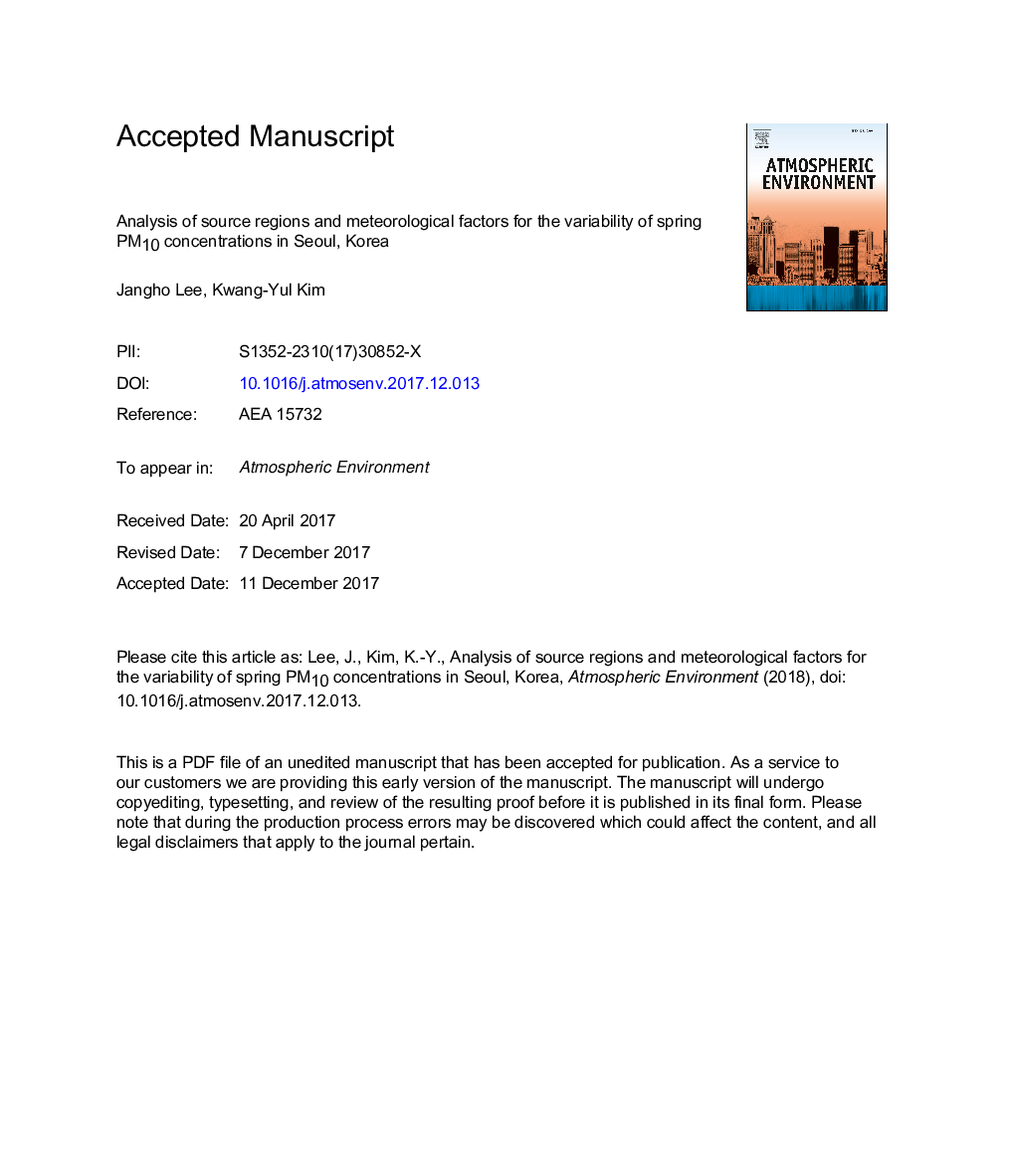| Article ID | Journal | Published Year | Pages | File Type |
|---|---|---|---|---|
| 8864194 | Atmospheric Environment | 2018 | 38 Pages |
Abstract
CSEOF analysis is applied for the springtime (March, April, May) daily PM10 concentrations measured at 23 Ministry of Environment stations in Seoul, Korea for the period of 2003-2012. Six meteorological variables at 12 pressure levels are also acquired from the ERA Interim reanalysis datasets. CSEOF analysis is conducted for each meteorological variable over East Asia. Regression analysis is conducted in CSEOF space between the PM10 concentrations and individual meteorological variables to identify associated atmospheric conditions for each CSEOF mode. By adding the regressed loading vectors with the mean meteorological fields, the daily atmospheric conditions are obtained for the first five CSEOF modes. Then, HYSPLIT model is run with the atmospheric conditions for each CSEOF mode in order to back trace the air parcels and dust reaching Seoul. The K-means clustering algorithm is applied to identify major source regions for each CSEOF mode of the PM10 concentrations in Seoul. Three main source regions identified based on the mean fields are: (1) northern Taklamakan Desert (NTD), (2) Gobi Desert and (GD), and (3) East China industrial area (ECI). The main source regions for the mean meteorological fields are consistent with those of previous study; 41% of the source locations are located in GD followed by ECI (37%) and NTD (21%). Back trajectory calculations based on CSEOF analysis of meteorological variables identify distinct source characteristics associated with each CSEOF mode and greatly facilitate the interpretation of the PM10 variability in Seoul in terms of transportation route and meteorological conditions including the source area.
Related Topics
Physical Sciences and Engineering
Earth and Planetary Sciences
Atmospheric Science
Authors
Jangho Lee, Kwang-Yul Kim,
